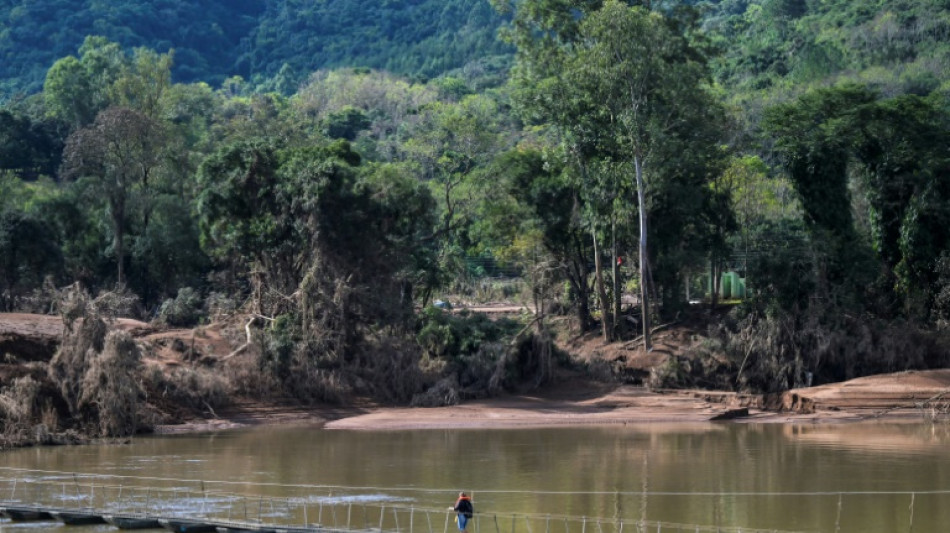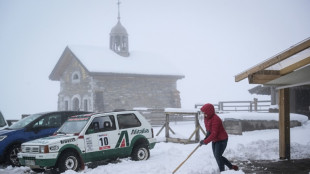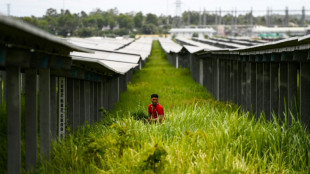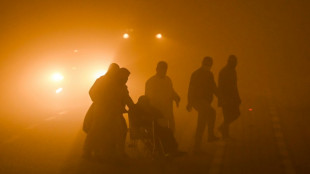

Floating walkways a lifeline for Brazilians after floods
To get to his doctor's appointment, Paulo Roberto Heineck limps across a floating walkway -- the only access to a neighboring town after floods in southern Brazil washed away multiple bridges one month ago.
"Everything is more difficult now, but we must keep going," said the 54-year-old father-of-three, his calf bandaged after a recent operation.
Brazil's army has temporarily installed five pontoon bridges in the Taquari Valley, an agricultural region that is one of the worst affected by historic floods that have left nearly 170 dead and dozens missing.
The narrow walkways balancing on canoe-shaped floats are typically used by the military in times of conflict after the bombing of bridges.
At least six bridges were washed away by floodwaters in the region, preventing residents from crossing between towns by car to go to work, school, or a medical appointment.
The vital new walkways are however precarious and ongoing bad weather has already led to them being swept away, forcing authorities to install new ones.
"The population needed to resume its routine in the shortest possible time," said Colonel Rafael Farias, 46, next to the walkway over the Forqueta River, in the town of Marques de Souza.
Inhabitants must pass in single file, wearing bright orange life jackets handed to them by soldiers stationed on both sides of the riverbank.
Juliani Steffer, a 36-year-old clothing saleswoman, arrives out of breath in Marques de Souza, after crossing from the town of Travesseiro carrying a bag full of goods.
"People have lost a lot of clothes. Since they can't come to my store by car, I go to their homes," she explained.
- Precarious solution -
There is no lighting over the walkway so crossings are stopped at dusk, forcing residents to rush to avoid being stuck on the wrong side.
And the footbridge connecting Travesseiro to Marques de Souza has already had to be removed twice due to strong currents.
About 20 kilometers (12 miles) away, two other walkways were built over the Taquari River, connecting Arroio do Meio town to Lajeado, the main city in the region, which has 90,000 residents.
Their success was immediate, with thousands parking their cars on either side of the river to take the pontoon bridge.
However, new torrential rains washed away part of the walkways and the authorities were working to reassemble them on Wednesday, the army told AFP.
Meanwhile, the military and volunteers made five boats available to cross the river, with a total capacity of 25 passengers.
The walkway "is essential because Arroio do Meio cannot live without Lajeado and Lajeado cannot live without Arroio do Meio," said Marta Rosani da Silva, a street cleaner preparing to cross the walkway with her six-year-old son, on the eve of a new storm.
"Of course it would be better" to have a bridge that allows cars to pass, said the 41-year-old.
"Where it previously took one hour to get to work, it now takes three."
The federal government has promised to rebuild the bridges.
Meanwhile, locals are trying to drum up donations through private initiatives and social networks to speed up rebuilding.
In the case of the Travesseiro bridge, the cost is estimated at 10 million reais ($2 million).
"The authorities promised four (million reais). We are missing six," said Katia Cristina Lammers, 44, the owner of a food business who is leading fund-raising efforts in Travesseiro.
H.Davenport--NG



